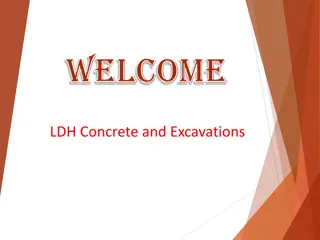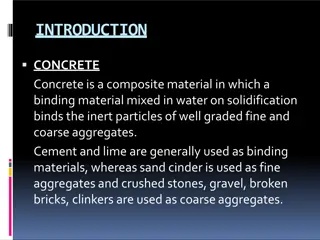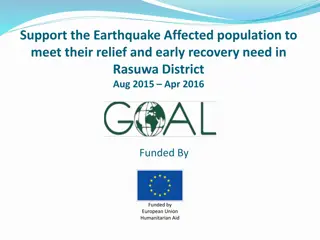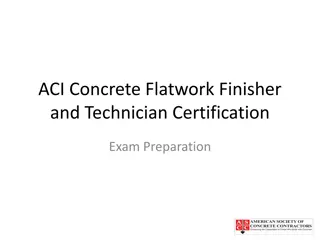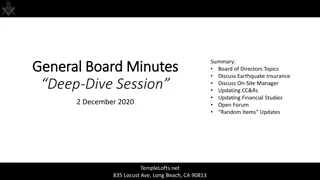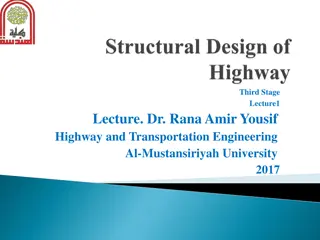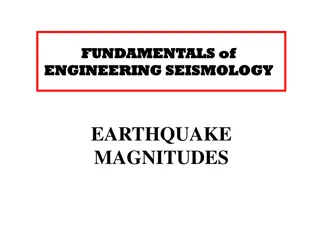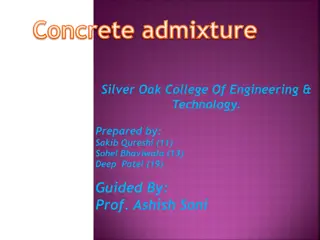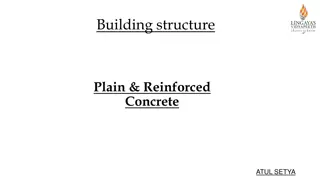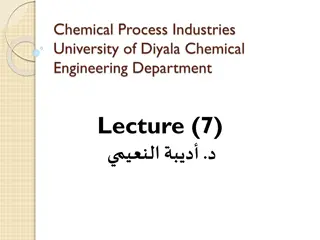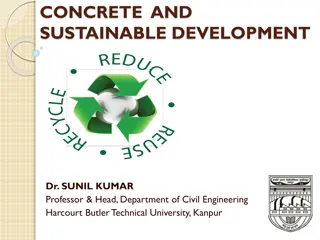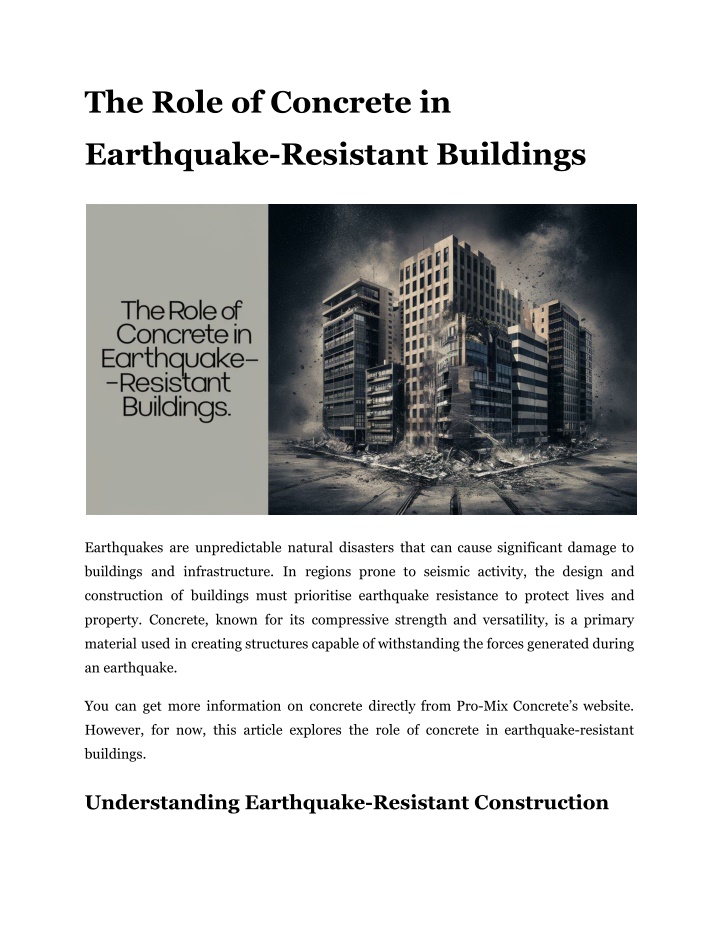
The Role of Concrete in Earthquake-Resistant Buildings
Discover how concrete enhances earthquake resilience in buildings. Learn key design features that make structures safer during seismic events.n
Download Presentation

Please find below an Image/Link to download the presentation.
The content on the website is provided AS IS for your information and personal use only. It may not be sold, licensed, or shared on other websites without obtaining consent from the author. If you encounter any issues during the download, it is possible that the publisher has removed the file from their server.
You are allowed to download the files provided on this website for personal or commercial use, subject to the condition that they are used lawfully. All files are the property of their respective owners.
The content on the website is provided AS IS for your information and personal use only. It may not be sold, licensed, or shared on other websites without obtaining consent from the author.
E N D
Presentation Transcript
The Role of Concrete in Earthquake-Resistant Buildings Earthquakes are unpredictable natural disasters that can cause significant damage to buildings and infrastructure. In regions prone to seismic activity, the design and construction of buildings must prioritise earthquake resistance to protect lives and property. Concrete, known for its compressive strength and versatility, is a primary material used in creating structures capable of withstanding the forces generated during an earthquake. You can get more information on concrete directly from Pro-Mix Concrete s website. However, for now, this article explores the role of concrete in earthquake-resistant buildings. Understanding Earthquake-Resistant Construction
What Makes a Building Earthquake-Resistant? Earthquake-resistant buildings are designed to withstand the seismic forces generated by earthquakes. Key features of such buildings include: 1. Flexibility: Ability to absorb and dissipate energy. 2. Strength: Capacity to support loads and resist deformation. 3. Redundancy: Multiple load paths to ensure stability if one path fails. 4. Ductility: Ability to undergo large deformations without failure. The Role of Concrete Concrete is a fundamental material in construction due to its compressive strength, durability, and versatility. In earthquake-resistant buildings, concrete contributes to the overall stability and integrity of the structure. Read More Article: What Is The Difference Between Wildflower Honey And Orange Blossom Honey? Importance of Concrete Mix Ratios What is the C35 Concrete Mix Ratio? The C35 concrete mix is a specific blend used in construction to achieve a particular strength of concrete. The C35 mix typically consists of: 1 part cement 2 parts sand 4 parts gravel or crushed stone 0.5 parts water This ratio results in concrete with a compressive strength of 35 megapascals (MPa), making it suitable for various structural applications. Why C35 Concrete Mix?
The C35 concrete mix ratio is preferred for earthquake-resistant buildings due to its balance of strength and workability. This mix provides sufficient compressive strength to support loads and resist seismic forces while maintaining the flexibility needed to absorb and dissipate energy during an earthquake. Benefits of Using C35 Concrete in Earthquake-Resistant Buildings Enhanced Strength and Durability Concrete mixed at the C35 ratio offers high compressive strength, which is crucial for supporting the weight of the building and resisting the horizontal forces exerted by earthquakes. Its durability ensures long-term performance and resistance to environmental factors. Improved Ductility The C35 concrete mix provides the necessary ductility to withstand the deformations caused by seismic activity. This property is vital for preventing sudden failure and allowing the structure to endure and dissipate energy effectively. Versatility in Construction The C35 concrete mix is versatile and suitable for various structural elements such as beams, columns, slabs, and foundations. This flexibility allows for the consistent application of earthquake-resistant design principles throughout the building. Comparison of Concrete Mix Ratios To understand the significance of the C35 concrete mix ratio, it is essential to compare it with other commonly used concrete mixes:
Mix Compressive Strength Applications Ratio (MPa) C20/25 20-25 Residential buildings, pavements C30/35 30-35 Commercial buildings, structural elements C35/45 35-45 High-rise buildings, critical infrastructure C40/50 40-50 Heavy-duty infrastructure, bridges, dams As shown in the table, the C35 concrete mix ratio provides a balance between strength and workability, making it ideal for earthquake-resistant buildings. Innovative Concrete Techniques in Earthquake-Resistant Construction Reinforced Concrete Reinforced concrete combines concrete with steel rebar or mesh to improve its tensile strength. This reinforcement helps the concrete to flex and absorb the energy from an earthquake, reducing the risk of catastrophic failure. The design of reinforced concrete structures must consider the placement and quantity of steel to optimise performance during seismic events. Precast Concrete Panels Precast concrete panels are manufactured off-site and assembled on-site. These panels are designed to fit together precisely. The use of precast panels can significantly reduce construction time and improve the overall quality of the building. Precast elements have demonstrated high elasticity and structural tolerance during earthquakes.
Base Isolation Systems Base isolation systems are innovative techniques that enhance the earthquake resistance of buildings. These systems use bearings or pads placed between the building s foundation and its superstructure. During an earthquake, the isolation system absorbs and dissipates seismic energy, reducing stress on the building. This technology allows the structure to move independently from ground motion. Shear Walls Shear walls are vertical elements that provide lateral resistance to seismic forces. Constructed using reinforced concrete, these walls help transfer horizontal forces from an earthquake down to the building s foundation. This minimises swaying and potential damage to the structure. The design and placement of shear walls are critical for buildings to withstand lateral forces effectively. Real-World Applications Tokyo Skytree, Japan Tokyo Skytree is a prime example of earthquake-resistant construction. Standing at 634 meters, it is the tallest structure in Japan. The use of high-strength concrete, similar to the C35 mix ratio, ensures the tower's stability and resilience against seismic forces. Burj Khalifa, Dubai The Burj Khalifa, the tallest building in the world, utilses a concrete mix with high compressive strength to support its immense height. The concrete mix used is designed to withstand both the vertical loads and the lateral forces induced by wind and seismic activity.
California High-Speed Rail The California High-Speed Rail project employs concrete mixes optimised for seismic resistance. The C35 mix ratio is used in various structural components to ensure the safety and durability of the rail system in earthquake-prone areas. Read More Article: What is MAC (Moves, Adds, Changes)? Definition of Moves, Adds and Changes Best Practices for Using C35 Concrete in Earthquake-Resistant Buildings Proper Mix Proportions Ensuring the correct C35 concrete mix ratio is critical for achieving the desired strength and durability. Accurate measurement of ingredients and thorough mixing are essential. Quality Control Regular testing of concrete samples during construction ensures consistency and compliance with the required specifications. Quality control measures include slump tests, compressive strength tests, and durability assessments. Reinforcement Techniques Combining the C35 concrete mix with appropriate reinforcement techniques enhances the overall earthquake resistance. Steel rebar, mesh, and fiber reinforcement provide additional strength and ductility. The Takeaway Understanding the importance of concrete mix ratios, such as the C35 concrete mix ratio, is essential for achieving the desired performance characteristics. As we continue to advance our understanding of seismic engineering, concrete will remain an essential
material in protecting buildings and their occupants from the devastating effects of earthquakes. For more information on concrete services and how you can build safer, more resilient structures, contact Pro-Mix Concrete today. Site Article: The Role of Concrete in Earthquake-Resistant Buildings



